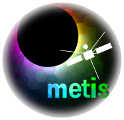Speaker
Description
A new research activity has been started which aims at a comprehensive study of coronal mass ejections (CMEs) and their interplanetary counterpart, including the study of the CME driven shock and the associated energetic particles. This activity is going to use Solar Orbiter/Metis, SOHO/LASCO, and STEREO/COR1 and COR2 coronagraphic data for imaging CMEs in the corona; these observations will be used as an input for numerical simulations of the interplanetary CME evolution to be done with the RIMAP code, which is based on the PLUTO magnetohydrodynamic (MHD) code; the results of the RIMAP simulations are used for comparison with in situ data, gathered by Solar Orbiter and by other spacecraft, to check the CME time of arrival and the plasma parameter changes, as well as the characteristics of the shock and of shock accelerated particles.
Our scientific methodologies are:
1. Determine the physical properties of CME-driven shocks from white-light coronagraphs and extreme UV observations of the low corona;
2. Trace the evolution of the CME-driven shocks from the source to the Earth's orbit, with the support from MHD and hybrid MHD/PIC numerical simulations (PLUTO code), using new approaches such as RIMAP to identify where the structure of the Parker spiral leads to shock generation.
3. Analyse solar energetic particles and energetic storm particles using in-situ data in the inner heliosphere and compare them with the observations of coronal shocks and the output from hybrid MHD/PIC simulations, for better understanding acceleration and propagation processes.
Our approach involves a strong connection between data analysis (both from remote-sensing and in situ) and numerical simulations linking large scales to local processes. In this work, some preliminary results on the events of 5 September 2022 and 4 November 2023 will be presented, with Metis observations giving the closest-to-the-sun coronagraphic input to the workflow.
This work is supported in part by the Italian PRIN 2022, project 2022294WNB entitled "Heliospheric shocks and space weather: from multispacecraft observations to numerical modeling".

